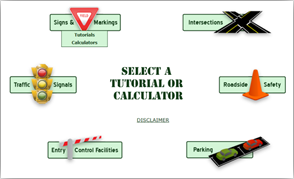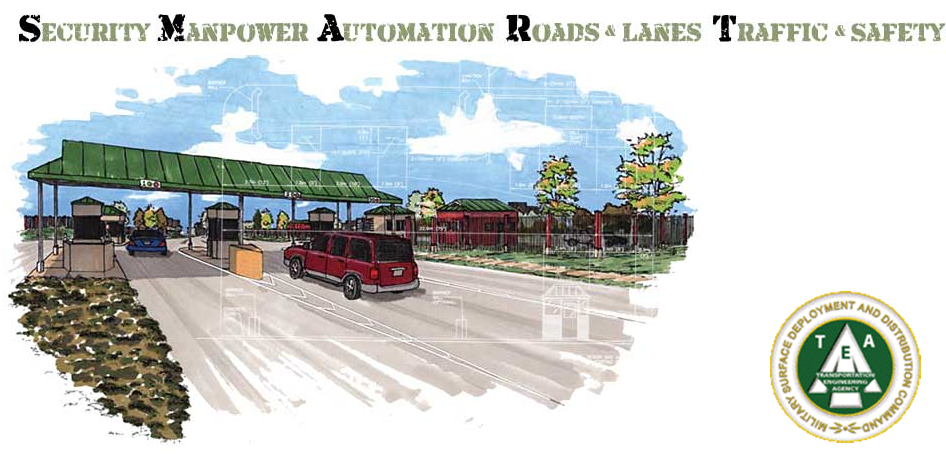Function
SDDCTEA functions as the DoD proponent for overall DoD traffic engineering coordination, technical assistance, and development of installation traffic engineering studies [AR55-80].
Mission
The mission of the DoD Traffic Engineering (TE) Program is to improve safety and efficiency on DoD installation road networks and entry control facilities or access control points. To accomplish the mission, the TE Program team engages in a variety of activities to include the following:
- Publish guidance documents (pamphlets & bulletins)
- Provide technical assistance
- Conduct traffic engineering studies
- Provide Training
- Develop and distribute engineering software ..(ACP/ECF SMART Decision Evaluator and Better Military Traffic Engineering)
- Conduct research supporting safety and efficiency
Software
 Better Military Traffic Engineering (BMTE): The purpose of this software is to provide installation engineers with proper traffic engineering procedures, references and common traffic, security and safety issues through tutorials. The BMTE is also equipped with multiple software tools to aid in common traffic engineering calculations used during the planning, design and operational phases.
Better Military Traffic Engineering (BMTE): The purpose of this software is to provide installation engineers with proper traffic engineering procedures, references and common traffic, security and safety issues through tutorials. The BMTE is also equipped with multiple software tools to aid in common traffic engineering calculations used during the planning, design and operational phases.
Click to open the BMTE Software

Security Manpower Automation Roads & Lanes Traffic & Safety (SMART): The SMART Evaluator uses Microsoft Excel and provides perspective on issues associated with ACP processing. When combined with practical knowledge, SMART helps make decisions with full awareness of the ramifications.
The objective of ECFs/ACPs is to secure the installation from unauthorized access and intercept contraband (weapons, explosives, drugs, classified material, etc.) while maximizing vehicular traffic flow by ensuring the proper level of access control and safety for all DoD personnel, visitors, and commercial traffic to an installation. The overarching priorities are security, safety, capacity, and sustainability.
Please contact the Traffic Engineering Team for access to the SMART Evaluator at army.sddc.safb.traffic@mail.mil and be sure to read the ReadMe Tab prior to using.
TEA SMART Evaluator User Manual – Be aware that this user manual is based on the previous web version and may not reflect results received from the excel version. Use this only for additional background information.
Training
Traffic Engineering and Safety (TES) Seminars: Since 2006 the Traffic Engineering Branch has hosted TES Seminars to assist installation safety, law enforcement, engineering, and command personnel by providing guidance on traffic engineering and safety considerations along roadways, intersections, and at entry control facilities (ECF) / access control points (ACP). Information is also provided on planning, designing, and operations of ECF/ACP considering security, safety, and traffic requirements.
The topics covered in TES Seminars are:
- ECF background and facilities
- Geometric Design
- Signs, Markings, and Retroreflectivity
- Active Vehicle Barriers
- Signs and Markings for ECF
- Traffic Engineering Studies
- Access Management and Parking
- Speed Management (i.e., Speed Limits and Traffic Calming)
- Pedestrian Accessibility for Persons with Disabilities
- Standards and Guidelines
- Roadside and Pedestrian Safety
- Roundabouts
- Traffic Signals
- Introduction to the Manual on Uniform Traffic Control Devices (MUTCD)
- Hands-on exercise: Intersection Traffic Safety Assessment and ECF Design
Links
BulletinsPamphletsStudiesFrom the Desk of...
